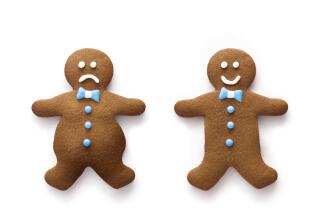Researcher Says Thinner Is Better, Wants to Put Weight Tables on Diet : Health: Harvard epidemiologist says 1959 recommendations are better than newer, heavier ones. He blames smokers for skewing data.
- Share via
WASHINGTON — Dr. Walter C. Willett believes in good, old-fashioned standards of thinness--the way weight tables used to look before they put on some weight themselves.
Although the three most widely used tables say being thin gives people the best chance of living longer, there’s strong disagreement over exactly how thin you should be.
This makes it harder for would-be weight-losers to decide how much they need to drop for their health’s sake.
Willett, who is an epidemiologist, and colleagues at Harvard stick with the oldest and thinnest of the three, Metropolitan Life’s 1959 tabulation.
“The 1959 Met Life tables come pretty close to being optimal,” he said.
As an example, a medium-framed 5-foot-7-inch man could weigh 131-145 pounds in Met Life’s 1959 tables, but 140-152 in Met Life’s 1983 tables. A medium-framed woman of that height could weigh 128-143 pounds in the 1959 tables and 133-147 pounds in the 1983 tables.
The federal government also has a table; however, the Health and Human Services-Department of Agriculture figures don’t compare directly because they’re based on body mass instead of frame size, splitting up optimal weights by age. But a 5-foot-7-inch person 35 or older could weigh 134-172 pounds.
The two later tables have a big smoking problem, Willett said.
“Smoking does make people thinner, but it puts them at a much higher risk of death,” Willett said. “It makes it look extra-hazardous to be very skinny.”
Because smokers are mixed in on the thin side of the scale, figures on heavier people reflect a false glow of health by comparison, Willett said.
Data in all three tables are questionable because of smoking, but later tables have a worse problem, Willett said. For instance, the later figures include more people who started smoking as teen-agers and thus built up more exposure as they aged, he said.
Going back and statistically factoring out smokers won’t necessarily solve the problem, Willett said. One reason is that later researchers can’t tell such things as how much the smokers inhaled, he said.
Willett has been locked in a dispute over this with Reubin Andres, clinical director of the Gerontology Research Center in Baltimore, an arm of the National Institute on Aging.
According to Andres’ statistical analysis, smoking is a non-issue: “Theoretically, smoking could distort the tables, but when it is tested, it does not.”
As for simply going for the lowest-weight table, Andres suggests facetiously: “Why not go even less than the 1959 table? Take 10 pounds off of that. If you’re going to make something up, then make up whatever you see as right.”
Andres sees the relationship between weight and mortality as looking like a U, with both the thinnest and fattest people likely to die before those in the middle.
Although the Met Life tables lump everyone 25-59 years together, Andres considers this too general to be useful. He also breaks down his tables by decade, and reports that optimal weight goes up by about a pound a year.
Exactly why some fat is healthy is not clear, but the data show it is, Andres said.
Willett, on the other hand, believes that adding the pounds will increase the risk of problems such as hypertension and diabetes.




